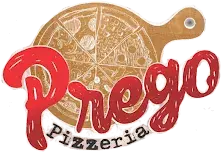In recent years, the food delivery industry has undergone a significant transformation, revolutionizing the way people dine and enjoy their favorite meals. With the rise of technology and changing consumer preferences, food delivery services have become more accessible, convenient, and diverse than ever before. Let’s delve into the evolution of food delivery and its impact on modern lifestyles.
The Birth of Food Delivery Services
Food delivery services have been around for decades, primarily catering to busy professionals and individuals seeking convenience. Traditionally, these services were limited to pizza delivery and Chinese takeout, with customers placing orders over the phone and waiting for delivery drivers to arrive at their doorstep. While these services offered convenience, they were often slow, limited in menu options, and lacked the technology-driven features we see today.
The Rise of Online Food Delivery Platforms
The advent of the internet and mobile technology has revolutionized the food delivery landscape, giving rise to online food delivery platforms such as Uber Eats, DoorDash, Grubhub, and Postmates. These platforms leverage advanced algorithms and GPS tracking to connect customers with a wide range of restaurants and eateries in their area. With just a few taps on their smartphone, customers can browse menus, place orders, and track delivery in real-time, all from the comfort of their homes or offices.
Convenience at Your Fingertips
One of the key drivers behind the popularity of food delivery services is the unparalleled convenience they offer. Whether you’re craving gourmet cuisine, comfort food, or healthy options, food delivery platforms provide access to an extensive selection of restaurants and cuisines. From breakfast, lunch, and dinner to late-night snacks, customers can satisfy their cravings with just a few clicks, without having to leave their homes or interrupt their busy schedules.
Meeting Evolving Consumer Preferences
Food delivery services have also evolved to meet the changing preferences of modern consumers. With an increasing focus on health and wellness, many delivery platforms now offer options for vegan, gluten-free, and organic meals. Additionally, customers have the flexibility to customize their orders, specify dietary preferences, and track nutritional information, empowering them to make informed choices about their food intake.
Supporting Local Restaurants
Food delivery platforms have become instrumental in supporting local restaurants and small businesses, especially during challenging times such as the COVID-19 pandemic. By partnering with delivery services, restaurants can expand their reach, attract new customers, and generate additional revenue streams. This symbiotic relationship benefits both restaurants and customers, fostering a vibrant and diverse culinary ecosystem in communities across the globe.
The Future of Food Delivery
As technology continues to advance and consumer preferences evolve, the future of food delivery holds endless possibilities. From drone deliveries and autonomous vehicles to virtual kitchens and AI-powered recommendations, the industry is poised for further innovation and disruption. Ultimately, food delivery services will continue to play a vital role in shaping the way we eat, dine, and experience culinary delights in the digital age.
In conclusion, food delivery services have transformed the way we enjoy food, offering unparalleled convenience, choice, and accessibility. With the evolution of technology and changing consumer preferences, the future of food delivery promises even greater innovation and convenience, ensuring that delicious meals are always just a few clicks away.
READ MORE:
Elevating Convenience: The Seamless Experience of Food Delivery with Prego Pizzeria

